Frequent and timely communication is the backbone of any successful client-provider relationship. A client emails you a request; after you complete work on that request you send an email to request feedback on that work; the client emails you their feedback; and so on. Most of these messages are pretty similar in content and function—so you can save yourself valuable time by automating away some of the more repeatable steps so you don’t have to think about them.
Here’s how you can use Airtable Automations to automate the process of sending out email requests for reviews to clients. Whenever you mark a project as ready for customer review, the base will automatically send an email to the associated client notifying them that the project is ready for their feedback. In this post, we’ll show you step-by-step instructions for how to add this automation to an existing Airtable base for a creative project pipeline. You can use similar techniques to add other email automations to Airtable bases, and you can also make a copy of the base below, which already has the automation built into it for you.
Setup
In order to build this automation, you’ll need a couple of ingredients. First, you’ll need an Airtable account and an Airtable base that you’d like to use with this automation. In this example, we’ll use a simple creative pipeline base that tracks the statuses of different projects as they go from in progress, to awaiting client review, to completion.
You’ll also need an email address that you control for testing purposes (even though this automation will send emails to other people under normal circumstances).
Required tables and fields
In your Airtable base, you should have a table (called “Projects,” “Requests,” or something similar) which lists the specific client requests that you’re trying to manage.
In this table, you’ll need the following:
- A single select field, which will contain select options designating the status of each project. Call this field “Status,” or something similar. This status field should include at least these two options: “In progress” (To designate projects not yet ready for client review) and “Client review” (To mark projects that are ready to be reviewed by clients).
- An email field, which will contain the email addresses of the relevant clients you’d like to notify for each project.

Instructions
Now that you’ve set up the required table and fields, you’re ready to make your automation.
Step 1: choose your base and create a new automation.
Open the base that you prepared following the Setup section above, then click the Automations button in the top right of your base. This will open the Automations side panel.
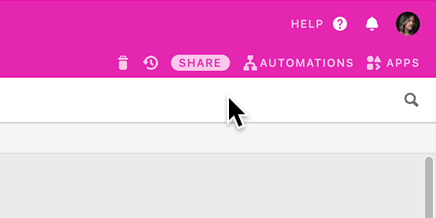
Once the side panel is open, click the blue “Create an automation” button.
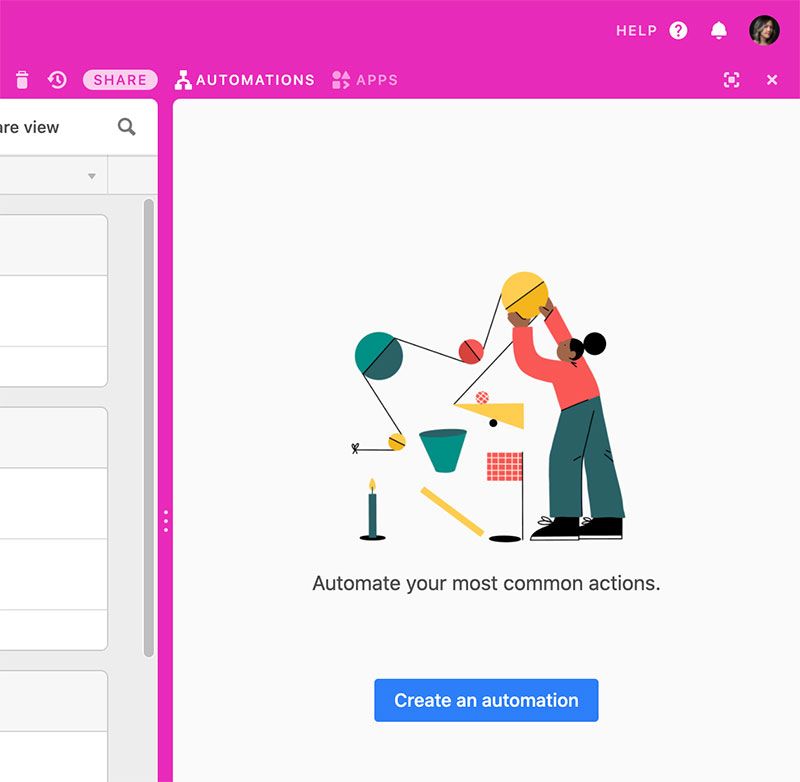
If your base already has some automations, you can create a new one by clicking on the “+ New Automation” button above the existing automations. Feel free to rename your automation to something more descriptive.

Step 2: set up your trigger
Once you’ve created your automation, you can give it a name, and then begin by choosing a trigger. The trigger is the event that starts the automation. In our case, we want the trigger to fire when we mark a project as being ready for “Client review.”
Click the “+ Choose a trigger” button. A menu will appear with a wide variety of potential triggers. Since we want this automation to trigger when one of our event records matches a specific condition—in this case, when a project has been marked as ready for “Client review”—select the “Airtable: When record matches conditions →” trigger.
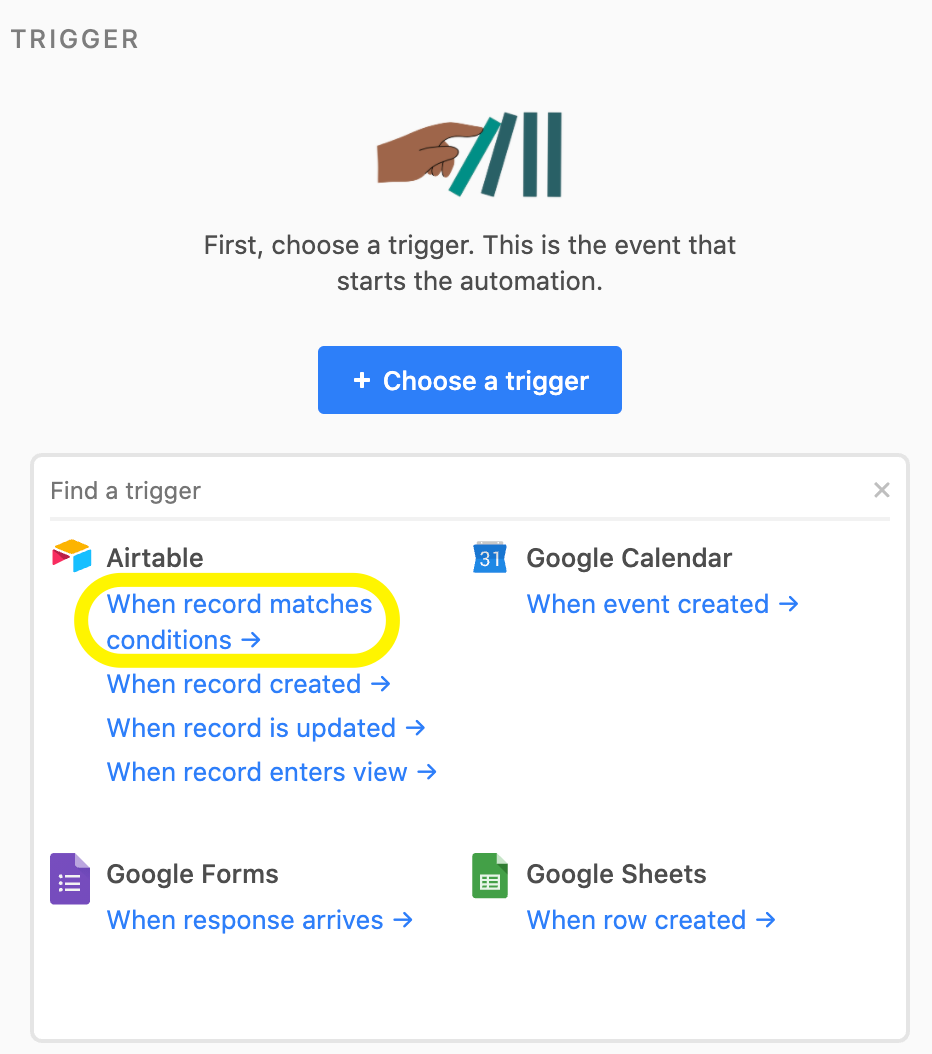
Now you’ll have to specify the conditions under which the trigger will fire. First, pick the specific table (“Projects”) from the earlier setup you did.
Then, click the “+ Add condition” button to add a new condition. If you’re already familiar with using filters in your Airtable base, the process of adding a condition is very similar: you pick a field, operator, and comparison value so that you can construct statements. In this case, we want to set up the condition "When [Status] [is] [Client review]." You can also add additional conditions if you’d like, although in this example, we’ll stick with just a single condition.
Make sure to run a test to ensure that everything is in order, and click the “Done” button when you’re finished. (You’ll be able to use the variables from the test data to help you set up the action later.)
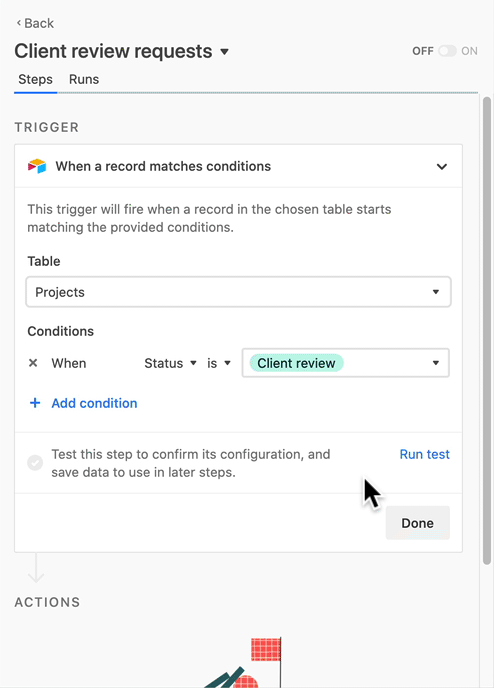
This test looks for a sample record to use for the action step(s) in your automation, so make sure you have a record in your chosen table that meets the trigger conditions. In this case, that means we need at least one record that has “Client Review” in the status field. The example base has a record like that so the test will run successfully. If you don’t have a record that meets these conditions, create one now and run the test again to get a successful result.
Remember: your test record should use your email address so you can receive the test email message! You won’t receive it when testing the trigger step, but you will receive the test email when testing your action step/completed automation later on.
Once your test runs successfully, you can click “Test ran successfully” to show the contents from the record it retrieved. When you’re ready, click “Done” and move on to the next step.
Step 3: set up the notification action
Actions are the tasks that get performed after a trigger fires. In our case, the action we want to perform is to send an email to a client to notify them when one of their projects is ready for review.
Let’s set up the email action by first clicking the “+ Add action” button. A menu will appear with a wide variety of potential actions. Select the “Airtable: Send email →” option.
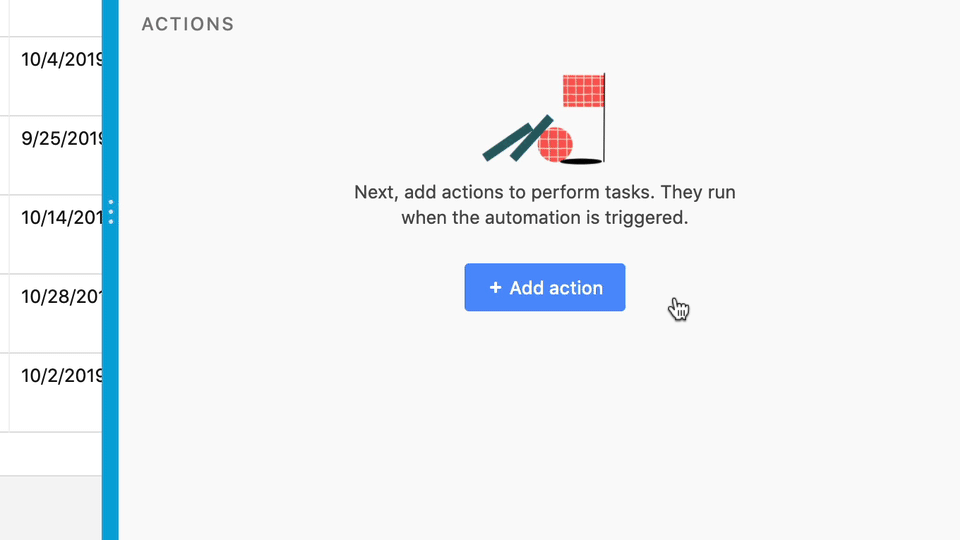
You’ll now see three email-related fields (To, Subject, and Message) to fill out just like you would when composing a normal email. However, you can insert dynamic information into this message that comes from the fields in your base. When the notification triggers, that information will be filled in just like it was in the newly-created record.
This allows you to create a message to the customer that includes text relevant to their request. It also provides you with a means of specifying to whom the email should be sent. By clicking the “+” button in any of the fields, you can choose information from the triggered record that will fill itself in automatically.
Because we want to send an email notification to the customer, we’ll set the “To” field to the contents of the “Client email” field that contains the email address of the client.
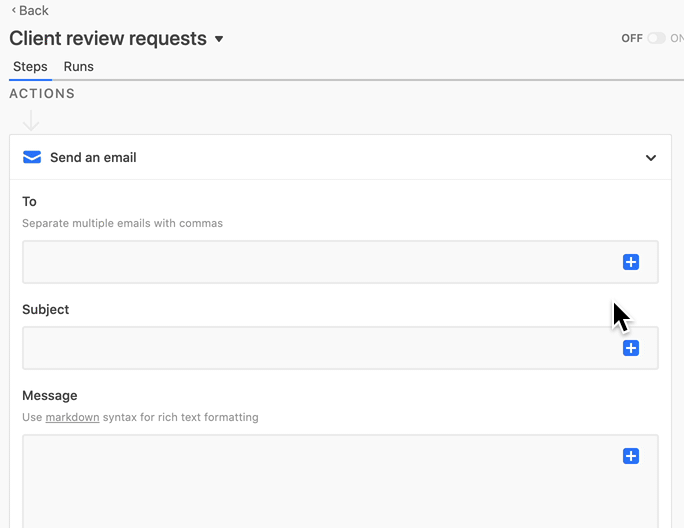
We’ll also set the “Subject” field to the title of their request and include other details in the body of the message (in the “Message” field) along with some additional friendly wording for context.

When you have your steps completed, make sure to run a test! You’ll receive an email at the email address you specified in your test record, so make sure you put your own email address in there before you run the test. If you didn’t, change the sample record and run the test on the trigger step again to pull in the new data. Once you’ve done that, you can run the action test and check your inbox for the sample email.
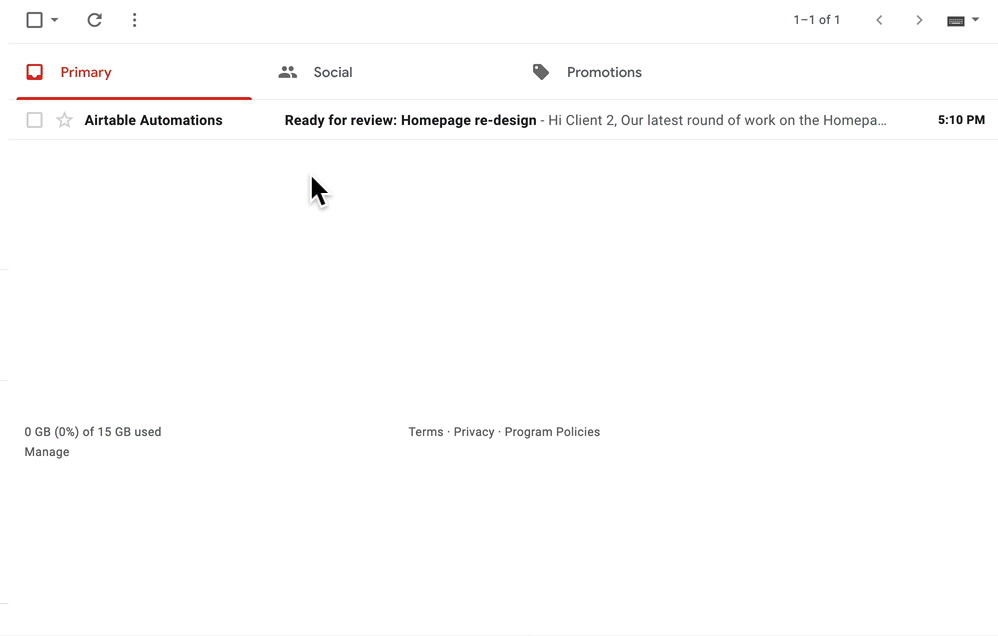
Once you’ve customized all the components to your liking and run a test to ensure that everything is in order, click the “Done” button to finish.
Step 4: turn it on
If everything looks good and you’re happy with the results of your action's tests, go ahead and toggle your new automation on.

Now your automation is live and will automatically send an email to your client any time a project’s status is set to “Client review.”
This is just one of the ways in which you can use Airtable Automations to orchestrate a custom workflow. Have more Automations guides you’d like to see from us? Give us your suggestions on our community forums.
You can also sign up here to get notified by email whenever we post a new recipe.